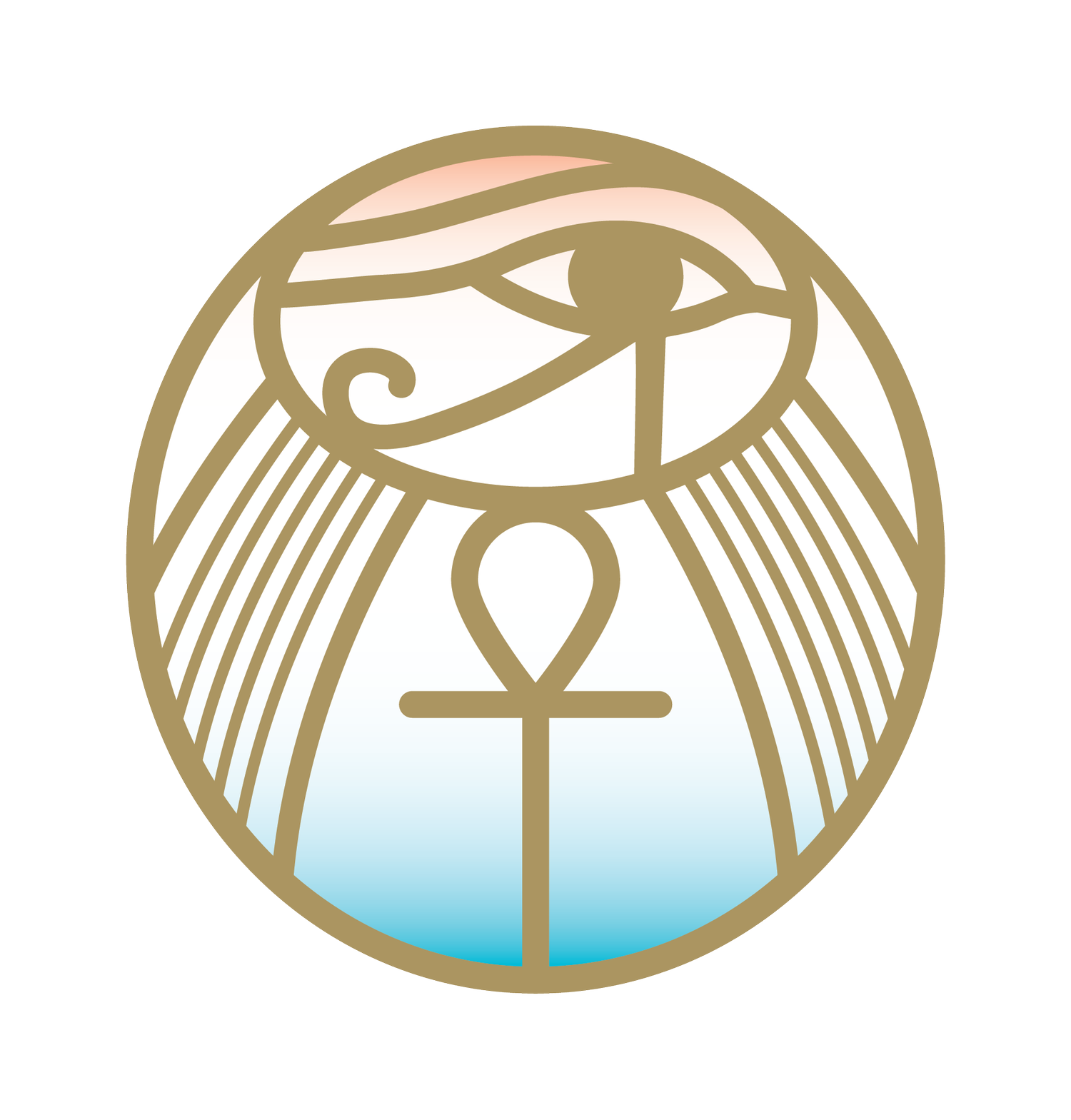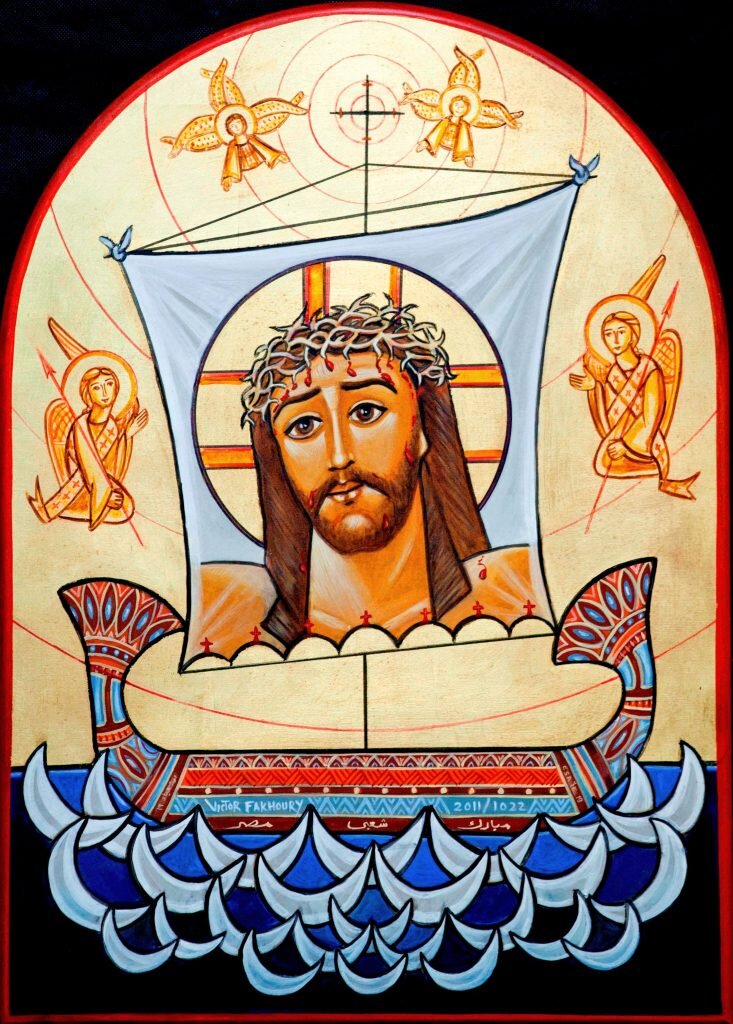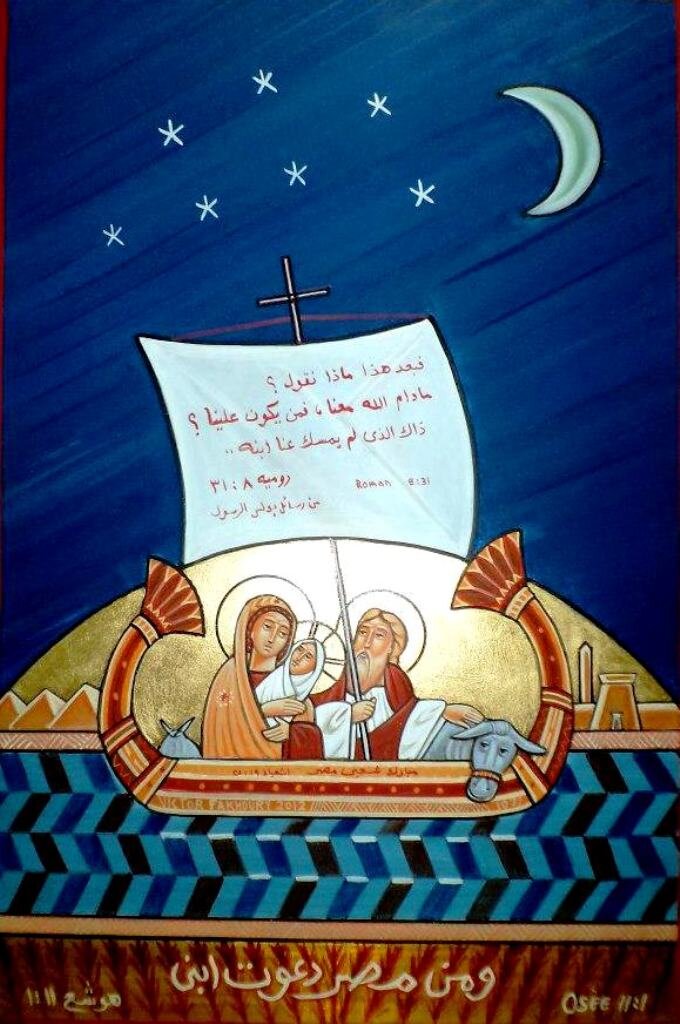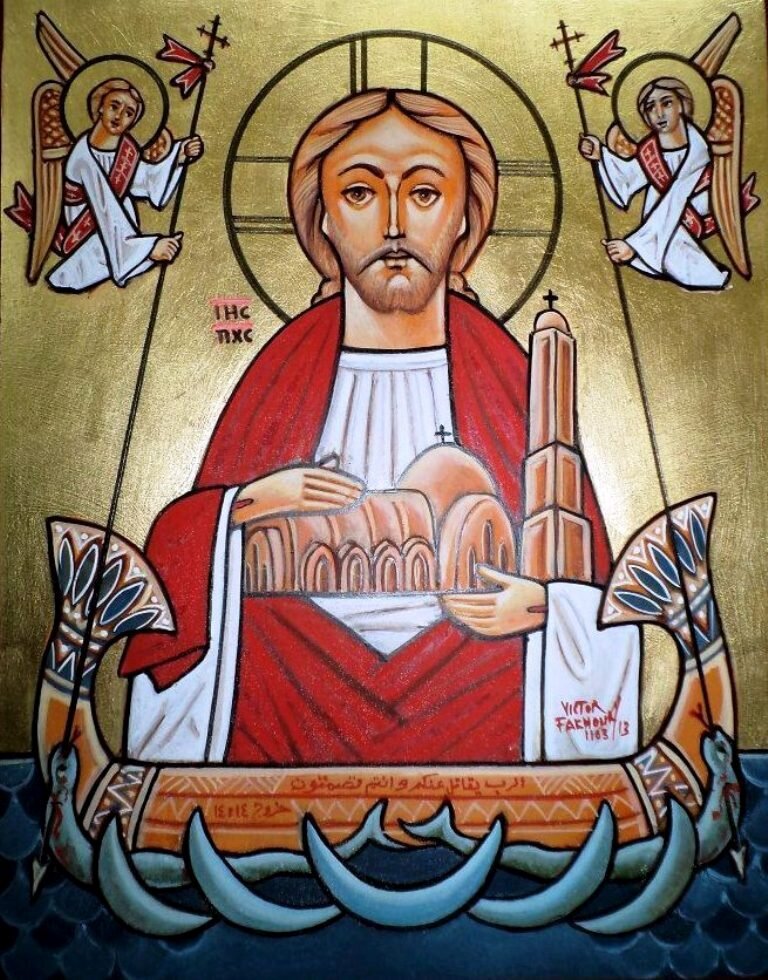VICTOR FAKHOURY ICON SERIES
The work of Victor Fakhoury, and in particular The Martyrs of Maspero icon, was introduced to the Coptic Museum of Canada through a special feature article in the Egyptian weekly newspaper, Watani International. In its 7 October 2012 issue, the paper dedicated a full page to remembering the one-year anniversary of that tragic event. What was striking in the Watani article was the fact that Fakhoury was writing an icon about a current situation in Egypt that affected the Church and the Coptic community. This is in stark contrast to the icons in the Coptic Orthodox Church that represent saints and martyrs predominantly from the Roman period. Furthermore, and Fakhoury made it his mission to paint not one but a series of icons on the life of the Church during a period of general upheaval in Egypt and the Middle East.
The Museum acquired The Martyrs of Maspero in 2014 and a second icon in the series, The Martyrs of Libya, in 2015. Gradually, it became evident that the significance of Fakhoury’s historical series had a place in a museum such as the Coptic Museum of Canada. The Museum acquired for its permanent collection the ten icons in Fakhoury’s series.
An icon in Coptic Orthodox tradition is conceived to tell the essence of a “story” about the image, the spiritual message. The icon’s shape/drawing translates the essence of Coptic spirituality with the Holy Bible as its guide and inspiration. The aim is to portray divine beauty and glory in a material way that is visible to the eye. Fakhoury first sought for his inspiration passages from the Holy Bible. In fact, he titles several of the icons with a biblical verse and often uses more than one biblical verse to reinforce the underlying spiritual message he wants to convey.
The imagery of Fakhoury’s icons have many layers of meaning. The Museum therefore sought Fakhoury’s interpretation of each icon. This interpretation is available in the Museum’s publication “Coptic Icons in a New Light. Narrative Series, 2011-2017, by Victor Asaad Fakhoury”. This publication is also available in French: « Icônes Copte sous un nouvel éclairage. Série narrative 2011-2017 de Victor Fakhoury ». Fakhoury ‘s interpretation, in Arabic may also be heard in a videos produced by Eihab Saeed in 2018. Subtitles are in English and in French:
“How it all started – In Victor Fakhoury’s own words”. click here
Victor Fakhoury Réflexions sur la serie d’icône Copte ». cliquer ici
Nile Scribes blog, February 25, 2020 “Scribal Spotlight: Victor Fakhoury and Neo-Coptic Icons.” click here
Biography – Victor Assad Fakhoury
Victor Fakhoury was born in Cairo in 1960. He graduated with a bachelor of arts in classics from Ain Shams University in Cairo (1983) and a diploma from the Faculty of Fine Arts (painting department) at Helwan University (1993). In 1996, he graduated with a master’s degree in Coptic art (drawing, sculpture, painting, and Coptic iconography) from the Coptic Orthodox Higher Institute of Coptic Studies (Cairo). After graduating, he worked for several years under the tutelage of Dr. Isaac Fanous, the “Father of Neo-Coptic Iconography.”
Fakhoury’ s icons are in many churches in Egypt , as well as churches in France, and in Lymasol (Cyprus), and Florida (USA). He also painted the icons at St. Mary Coptic Orthodox Church, Ottawa. In Europe, he exhibited his icons in Belgium, France, and Germany.
Fakhoury is a Coptic iconographer influenced by the Isaac Fanous School. While he is loyal to Coptic traditional iconography’s two-dimensional representations, the intensity of colours and stylized lines, oval shaped faces, a black line surrounding almond-shaped eyes, and the use gold leaf to evoke the Divine Light, Fakoury is also a contemporary Coptic artist, influenced by modern movements, such as, cubist and abstract art. Above all, his art recalls the imagery of his ancient Egyptian artistic heritage: papyrus boats, the ankh, the scarab, the solar disc. He incorporates these ancient representations with traditional Coptic themes. In this way, ancient Egyptian artistic heritage “nourishes” contemporary art and the spiritual message Fakhoury seeks to communicate through his icons.
One of the major cultural outcomes of the March 25, 2011 so-called Arab Spring was how it became a catalyst for artistic expression. Graffiti on walls, visual and other art forms so to speak “burst out” from nowhere. Several publications have documented this art. It has generally been “secular” in its representations. Fakhoury’s contribution to this movement is that he not only created one icon but a series of icons in which he narrates a sequence of contemporary events in the life of the Church, in Egypt, beginning with the popular uprisings unleashed by the 25 January 2011 revolution.
2017.1.4
“Blessed is Egypt My people.”
25 January 2011
By: Victor A. Fakhoury
Tempera on wood, 70cm x 50cm
Inspired by & noted on the boat:
Isaiah 19:25
2014.2.1
The Martyrs of Maspero. 9 October 2011
By: Victor A. Fakhoury
Tempera on wood, 70c m x 50cm
Inspired by & inscribed on icon:
Isaiah 49:16, Malachi 4:2, Zacharia 2:7
2017.1.6
“If God is with us, who can be against us?” 1 July 2012
By: Victor A. Fakhoury
Tempera on wood,
60cm x 40cm
Inspired by and written on the sail of the boat: Romans 8:31
2017.1.5
The Victory. 30 June, 2013
By: Victor A. Fakhoury
Tempera on wood, 60cm x 40cm
Inspired by and inscribed on boat:
Malachi 4:2
2017.1.3
“The Lord will fight for you, and you shall hold your peace.” 7 May 2013
By: Victor A. Fakhoury
Tempera on wood, 35cm x 25cm
Inspired by and inscribed on boat:
Isaiah 49:15-16, Exodus 14:14
Replica of original icon in the collection of H.H. Pope Tawadros II. Reproduced for the Museum by permission of His Holiness.
2016.3.1
The Christian Martyrs of Libya. 16 February 2015
By: Victor A. Fakhoury
Tempera on wood, 50cm x 70cm
Inspired by: Book of Revelations 6:9 -11
2017.1.1
The Martyrs of St. Peter & St. Paul Cathedral (Cairo) – elBoutroseyya. December 16, 2016
By: Victor A. Fakhoury
Tempera on wood, 40cm x 60cm
Inspired by: Ephesians 5: 27, Matthew 16:18, Revelations 8:12-13
2017.1.2
The Martyrs of St. George (Tanta) and St. Mark’s Cathedral (Alexandria). 9 April 2017
By:Victor A. Fakhoury
Tempera on wood, 40cm x 60cm
Inspired by: Book of Revelations 7:9-10
2017.1.6
The Martyrs of Qalamūn. 26 May 2017
By: Victor A. Fakhoury
Tempera on wood, 36cm x 47cm
Inspired by and inscribed: Gospel of St. Luke 22:42
2019.3.1
The Martyrs of St. Menas and Pope Kyrillos VI Church (Helwan), 29 December 2017, and of al-Umraniya (Giza). 1 January 2018
By: Victor A. Fakhoury
Tempera on wood, 40cm x 28.5cm
Inspired by and inscribed on hull of boat: Gospel of St. John 16 :33










